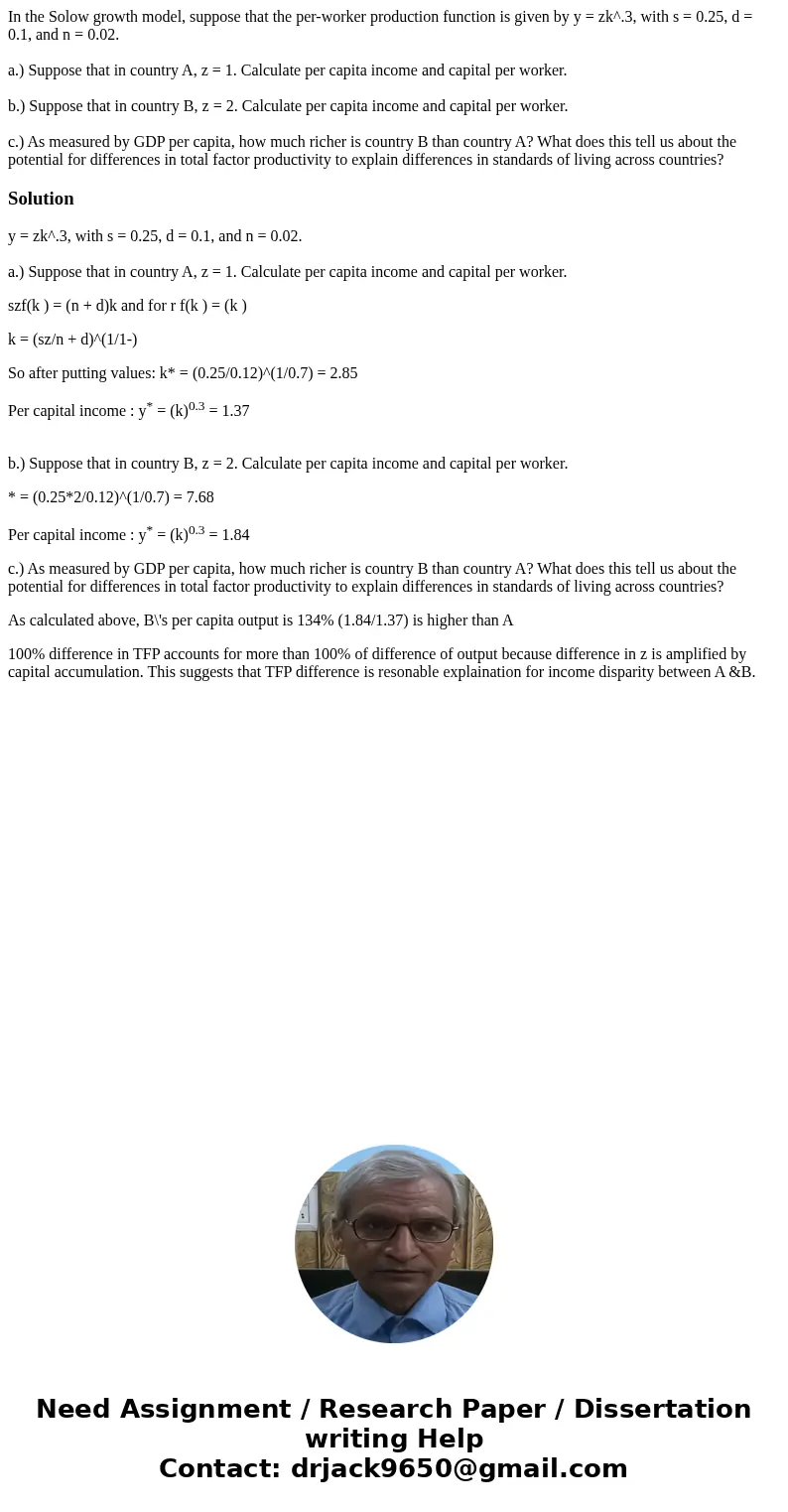In the Solow growth model suppose that the perworker product
In the Solow growth model, suppose that the per-worker production function is given by y = zk^.3, with s = 0.25, d = 0.1, and n = 0.02.
a.) Suppose that in country A, z = 1. Calculate per capita income and capital per worker.
b.) Suppose that in country B, z = 2. Calculate per capita income and capital per worker.
c.) As measured by GDP per capita, how much richer is country B than country A? What does this tell us about the potential for differences in total factor productivity to explain differences in standards of living across countries?
Solution
y = zk^.3, with s = 0.25, d = 0.1, and n = 0.02.
a.) Suppose that in country A, z = 1. Calculate per capita income and capital per worker.
szf(k ) = (n + d)k and for r f(k ) = (k )
k = (sz/n + d)^(1/1-)
So after putting values: k* = (0.25/0.12)^(1/0.7) = 2.85
Per capital income : y* = (k)0.3 = 1.37
b.) Suppose that in country B, z = 2. Calculate per capita income and capital per worker.
* = (0.25*2/0.12)^(1/0.7) = 7.68
Per capital income : y* = (k)0.3 = 1.84
c.) As measured by GDP per capita, how much richer is country B than country A? What does this tell us about the potential for differences in total factor productivity to explain differences in standards of living across countries?
As calculated above, B\'s per capita output is 134% (1.84/1.37) is higher than A
100% difference in TFP accounts for more than 100% of difference of output because difference in z is amplified by capital accumulation. This suggests that TFP difference is resonable explaination for income disparity between A &B.

 Homework Sourse
Homework Sourse